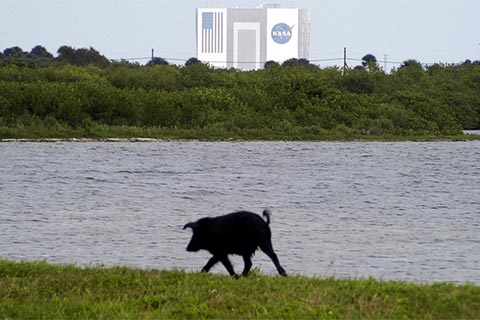
National Environmental Policy Act (NEPA)

NEPA Has Changed Our Lives
One of the Most Significant Pieces of Environmental Legislation
About NEPA
The National Environmental Policy Act (NEPA), enacted in 1969, has changed our lives. NEPA is one of the most significant pieces of environmental legislation enacted in the United States. It has affected substantially how federal agencies conduct their planning and decision making processes because it requires all agencies to: (1) Consider environmental factors appropriately when making decisions, not basing decisions solely on technical and economic factors; (2) Involve the affected and interested public early in its environmental-analysis process; (3) Seek less environmentally damaging ways to do our jobs and (4) Document in plain language for the decision maker and the public this environmental-analysis process.
NEPA is just good planning and decision making that appropriately considers the potential physical, biological, economic, social, and human environment.
NEPA requires review of the effects of all Federal, federally-assisted and federally-licensed actions, not just of those defined as “major” or as having “significant” impacts. The level of review given different kinds of projects varies with the likelihood of serious impact, however. In general, the NEPA process entails: determining what need must be addressed, identifying alternative ways of meeting the needs, analyzing the environmental impacts of each alternative, and armed with the results of this analysis, deciding which alternative to pursue and how. All agencies of the Federal Government are required to utilize a systematic, multi-disciplinary approach that will insure the integrated use of the natural and social sciences and the environmental design arts in reviewing projects that may have an impact on man’s environment. Determinations of impact can be addressed at three different levels; Categorical Exclusions (CatEx), Environmental Assessments (EA), and Environmental Impact Statements (EIS).
In addition to the standard NEPA documentation cited above, KSC has also developed an Environmental Resource Document (ERD). The ERD provides comprehensive baseline environmental information about KSC and is updated every five years.
Environmental Reviews
All Reviews on KSC Begin With The KSC Environmental Checklist

The KSC Environmental Checklist should be completed for every project and action implemented on KSC. It begins the process of environmental review and results in a Record of Consideration (REC), which is sent to the project proponent. The REC provides a Class of Action Determination as well as list of potential environmental requirements associated with the project or action that must be completed to assure compliance with all applicable environmental laws and regulations.
Please remember to provide maps, project scopes and descriptions when submitting your checklist to the Environmental Program Branch.
Class of Action Determination
The NEPA process consists of an evaluation of the environmental effects of a federal action including its alternatives. There are three levels of analysis: Categorical Exclusion (CatEx), Environmental Assessment/Finding of no Significant Impact (EA/FONSI), and an Environmental Impact Statement (EIS).
- Categorical Exclusion: At the first level, an action may be Categorically Excluded from a detailed environmental analysis if it meets certain criteria which a federal agency has previously determined as having no significant environmental impact. A number of agencies have developed lists of actions which are normally categorically excluded from environmental evaluation under their NEPA regulations.
- EA/FONSI: At the second level of analysis, a federal agency prepares an Environmental Assessment (EA) to determine whether or not a federal action would significantly affect the environment. If the answer is no, the agency issues a Finding of no Significant Impact (FONSI). The FONSI may address measures which an agency will take to mitigate potentially significant impacts.
- EIS: If the EA determines that the environmental consequences of a proposed federal undertaking may be significant, an EIS is prepared. An EIS is a more detailed evaluation of the proposed action and alternatives. The public, other federal agencies and outside parties may provide input into the preparation of an EIS and then comment on the draft EIS when it is completed.
If a federal agency anticipates that an undertaking may significantly impact the environment, or if a project is environmentally controversial, a federal agency may choose to prepare an EIS without having to first prepare an EA.
After a final EIS is prepared and at the time of its decision, a federal agency will prepare a public record of decision (ROD) addressing how the findings of the EIS, including consideration of alternatives, were incorporated into the agency’s decision-making process.
Kennedy’s NEPA Documents
Currently Open for Comment
Kennedy’s NEPA Library
Related Links
KSC Environmental Checklist
KSC Environmental Resources Document (Internal Access Only)
NASA NEPA Portal
NASA NEPA Library


